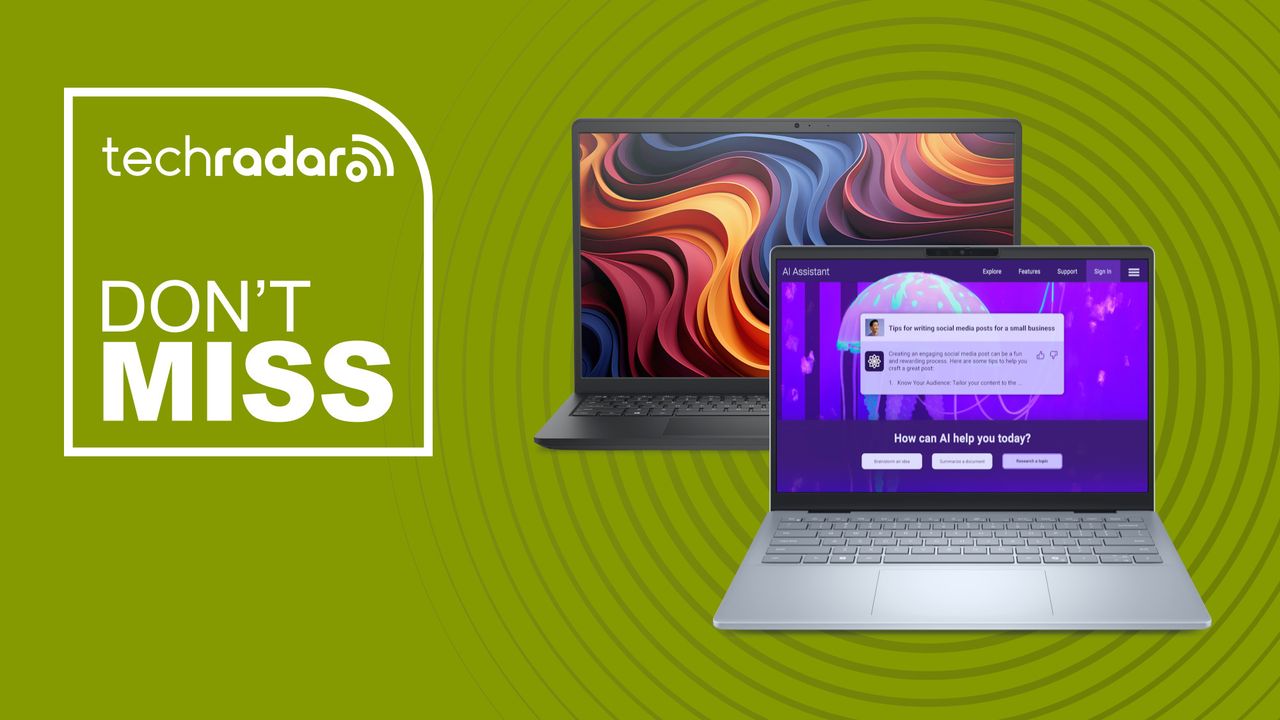It’s not perfect, but the UK Online Safety Act deserves our support, as well as some improvements





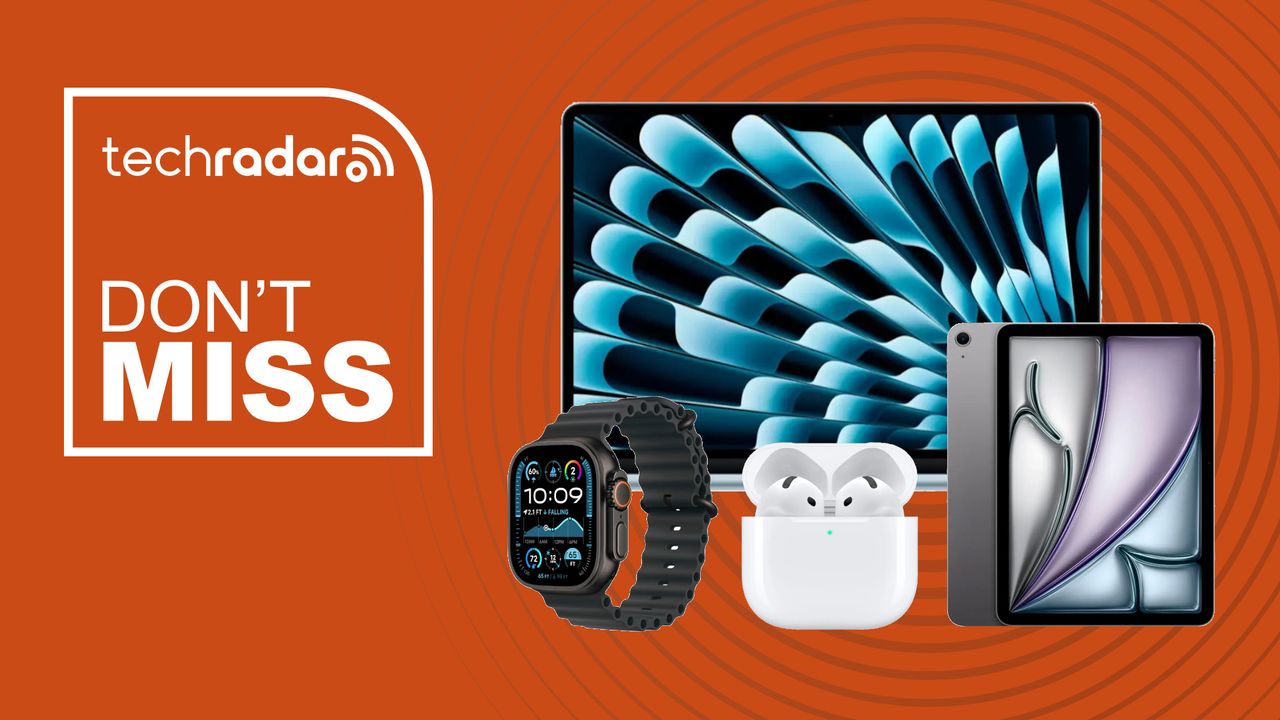
Q: I'm hearing that Microsoft is pulling the plug on Windows 10 later this year. What does that mean for my current Windows 10 PC, and what are my options?
A: Microsoft will officially end support for Windows 10 on October 14, 2025, a little over 10 years after the operating system was released. While you can continue to use Windows 10 PCs after that date — and it's understandable why, I gave it a glowing review at launch — you'll no longer receive any customer support, security updates or any other sort of upgrades. Windows 10 will effectively become a zombie operating system, shuffling along until some sort of malware or massive security breach renders it far too insecure. (Think about it this way: Would you actually feel safe running Windows XP, a notoriously malware-prone OS that hasn't received a significant security update since 2019, today? I would hope not!)
So what's a Windows 10 user to do? Let's consider your choices.
For most users, the simplest way to move on from Windows 10 is to step up to Microsoft's new OS. Windows 11 is a free upgrade for Windows 10 users running the latest 22HS update and who also meet the minimum hardware specifications. Microsoft isn't asking for much — just a 1 GHz dual-core 64-bit processor, 4GB of RAM and 64GB of storage -— but security requirements may be a problem for very old PCs. Those include the ability to launch in Secure Boot mode, as well as having a TPM 2.0 (Trusted Platform 2.0) module. Windows 11 relies on the latter for biometric logins, BitLocker data encryption and other security features. If you don't have TPM 2.0, you'll be stuck with Windows 10 until you get a new PC. )
If that all sounds too complicated, Microsoft's PC Health Check app can also let you know if your system is ready for Windows 11. And if you've been bombarded by Windows 11 upgrade notifications over the past few years, that's also a not-so-subtle nudge that your PC is likely ready for the new OS. (There are various hacks that can let you install Windows 11 without TPM 2.0 and Secure Boot, but they’re risky and could make your OS installation vulnerable.
If you do choose to upgrade, you can expect a relatively painless process. Gone are the days when a Windows upgrade could easily wipe out your entire system. Assuming you've got enough hard drive space to hold the new OS, now the upgrade process is merely a matter of sitting back and watching your system reboot a few times. I'd still recommend backing up any essential data before upgrading, though, just in case you run into any issues. (Pairing a cloud-based Microsoft OneDrive backup with a local hard disk is a good belt and suspenders solution.)
If your system is too old to support Secure Boot mode and TPM 2.0, it’s probably just time for an upgrade. (Expert users can find workarounds on YouTube and elsewhere, but you need to be adventurous enough to handle the likes of Github downloads and security overrides.) Luckily, we’ve got a slew of buying guides to help you out. Be sure to check out our best laptop guide, which includes some tips on the best specs to seek out, as well as some of our favorite systems like the Dell 14 Premium and MacBook Air (because it’s also a good time to consider switching from Windows to Macs). Our best Windows laptops guide also highlights systems like the ASUS ZenBook S14 and the Surface Pro Copilot+ tablet. While the sweetspot for new PCs tends to be in the $750 to $1,200 range, with current back-to-school promos, you can find very capable laptops and desktops for as low as $500, and occasionally less. But if you're looking for something higher end ($1,400 and up), our best gaming laptop guide would be helpful.
Windows 10 won't self-destruct when its support ends, so you could conceivably just use your older PC until it dies. But that's a risky option since you won't be getting any security updates. All it takes is for one intrepid hacker to find a new security flaw and you could easily fall victim to any number of issues. That includes getting malware, which could slow down performance and leak your data to hackers, or falling victim to a ransomware data theft scheme. And every day past October 14 just raises the likelihood of OS-level vulnerabilities that third-party antivirus software would be ill-equipped to fight off. Trust me – you don't want to do this. At the very least, buy yourself another year to figure things out
If your hardware can't support the move to Windows 11, you can at least hit the snooze button while you figure things out. For a one-time payment of $30 (or 1,000 Microsoft reward points), you can subscribe to the Windows 10 extended security update (ESU). As its name implies, the ESU will get you Windows 10 security updates, bug fixes and technical support until October 13, 2026. Sure, it's only a year of additional support, but that can at least buy you enough time to do more research on a new PC, or wait for a holiday sale. For what it's worth, this marks the first time Microsoft has offered any sort of ESU to consumers. Typically, they're just a way for corporate IT admins to get additional support without migrating to a new OS.
As tech reporters, the Engadget staff is always answering questions from friends and family about electronics, software, gaming, big tech policies and more. So we decided to write down our answers. This question is a composite of ones we’ve been asked recently. If you’ve got a tech-related question you’d like us to answer for you, please email [email protected].
This article originally appeared on Engadget at https://www.engadget.com/computing/ask-engadget-what-are-my-options-when-windows-10-support-ends-on-october-14-160534495.html?src=rss©
© Devindra Hardawar for Engadget
If you’ve held on to an aging Windows laptop for too long, it’s now a great time to upgrade. With all the hype around AI PCs, computer makers are rushing to release new designs featuring efficient new chips from Intel and AMD. And thanks to Microsoft’s Copilot+ initiative, which launched last year, we’re finally seeing decent notebooks powered by Qualcomm’s Snapdragon chips, which are leading to better battery life and lighter designs.
Whether you need a premium ultraportable, a powerful gaming rig or a versatile mobile workstation, our current list of the best Windows laptops highlights our favorites that have been rigorously tested by our team. You may even find a Windows laptop that suits you better than an Apple MacBook if you’re looking to make the switch. For those on a budget, check out our list of the best cheap Windows laptops to find great options that won't break the bank.
How much power do you actually need? That’s the main question you need to ask yourself when choosing a Windows laptop (or any computing device, to be honest). It’s easy to overspend and get far more computer than you actually need, or skimp too much and find yourself with an under-powered processor and too little memory. We’ve broken down our recommendations into a variety of product categories below, but generally you’re looking to get a laptop with at least 16GB of RAM and a modern Intel Core Ultra or AMD Ryzen processor. If you’re a gamer, you’ll also want to make sure you get a decent graphics card. (That’s all explained in our guide for best gaming notebooks.)
Any computer that includes an NPU (neural processing unit) is an “AI PC,” since that chip can offload some tasks from the CPU and GPU. And since every chipmaker has rushed to join the AI bandwagon, most systems released today count as AI PCs. The exceptions are some higher-powered workstation and gaming laptops, which may have NPU-free chips, or extremely cheap notebooks running low-end chips.
To make it easier to find premium AI PCs, Microsoft unveiled its Copilot+ program last year. It calls for notebooks with NPUs that support at least 40 TOPS of AI processing power, 16GB of RAM and 256GB of storage. The first batch of Copilot+ systems included the new Surface Pro and Surface Laptop.
To make things even more confusing, Copilot+ systems include PCs powered by Qualcomm’s new Snapdragon Arm-based CPUs, which can run modern Windows apps but may have trouble with older software and drivers.
Regardless of whether a notebook has a touchscreen or a more traditional panel, we look for bright displays (300 nits or more) that are easy to use outdoors or in sunny rooms, with accurate colors and wide viewing angles. Screens with high refresh rates are great for competitive gamers (or anyone who wants smoother document scrolling), while those with wider color gamuts are important for content creation and video editing. And even if you don’t plan on spending a ton of time on video calls, every laptop needs a decent webcam — 1080p or higher is preferred.
Even with advancements in cellular modems and Wi-Fi, dedicated ports for transferring data or connecting peripherals can make or break a laptop. Ideally, all but the thinnest and lightest systems come with three USB-C ports, while things like built-in SD card readers can be extremely handy when trying to import media from a camera. And if a notebook is saddled with a slow or outdated Wi-Fi modem (we’re looking for Wi-Fi 6 or later), that’s basically an immediate disqualification.
It doesn’t matter how powerful a laptop is if it conks out when you need it the most. Typically we look for runtimes of at least ten hours on a charge, but when it comes to good battery life, longer is always better. That said, on gaming machines with thirsty graphics cards, you may have to settle for a bit less. And on bigger machines, it’s also important to consider if the system can charge via USB-C or if it needs a larger, proprietary power brick.
The main difference between a Windows laptop and a Chromebook lies in their operating systems. Windows laptops run on Microsoft’s Windows OS, whereas Chromebooks use Google’s Chrome OS.
Aside from using different operating systems, performance is one of the major differences between a Windows laptop and a Chromebook. Windows laptops can be equipped with powerful processors and discrete graphics, making them suitable for demanding tasks like gaming or video editing. Chromebooks, on the other hand, are generally optimized for speed and simplicity, focusing on lighter tasks like word processing and web browsing.
In terms of software, Windows laptops support a range of desktop programs, whereas Chromebooks primarily use web apps or Android apps from the Google Play Store. Because of their differences, Chromebooks tend to be more affordable since they are primarily designed for basic, everyday tasks. Windows laptops can range in price from budget to premium, with the latter suitable for gaming, professionals or creatives.
When it comes to macOS and Windows, they’re basically two different worlds in the realm of computers, each with its own personality. MacOS is sleek, minimal and feels pretty intuitive, especially if you like things that just “work” out of the box. Apple designs macOS to work in tandem with its hardware, so if you have an iOS device like an iPhone or an iPad, the whole ecosystem syncs up seamlessly.
Windows is more like the jack-of-all-trades. It's known for being super flexible and customizable. Whether you want to tweak how things look or run a wide variety of software, Windows gives you that freedom. It's also more widely used in business settings, mainly because it's been around longer and is compatible with tons of different programs and hardware.
August 2025: Updated our top picks to include the Dell 14 Premium.
March 2025: Updated one of our top picks and added new information about AI PCs.
September 2024: Added an FAQ section.
July 2024: We updated our top picks to include the Microsoft Surface Laptop 7th Edition.
This article originally appeared on Engadget at https://www.engadget.com/computing/laptops/best-windows-laptop-130018256.html?src=rss©
© Engadget
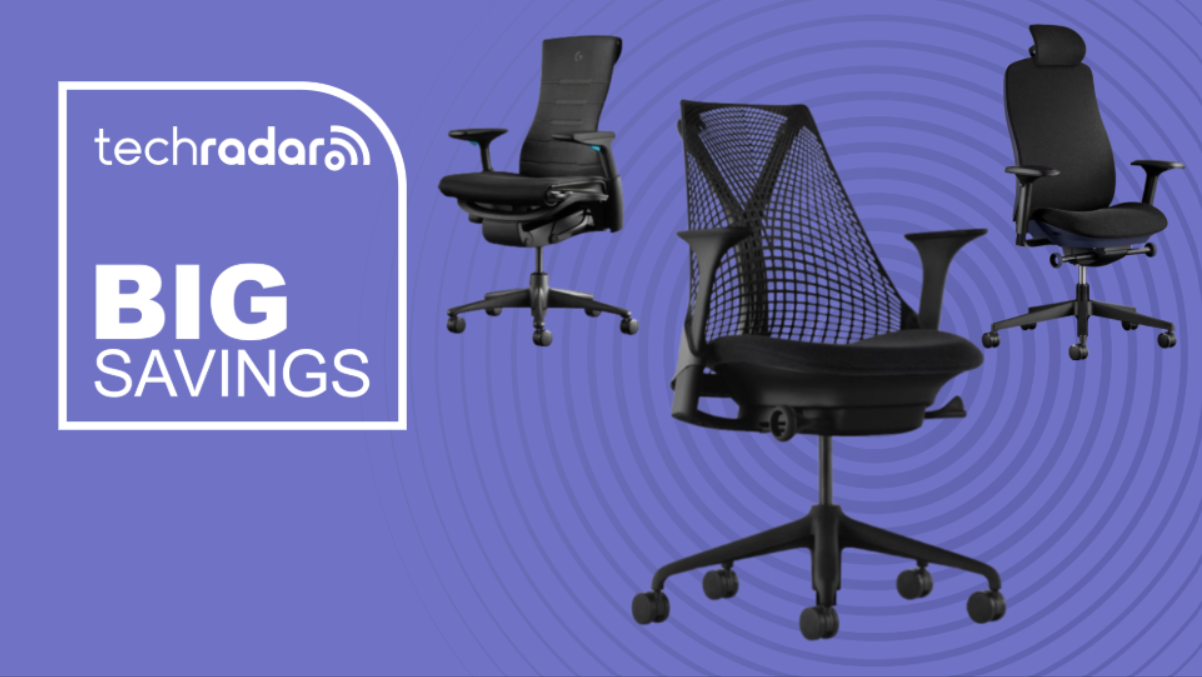

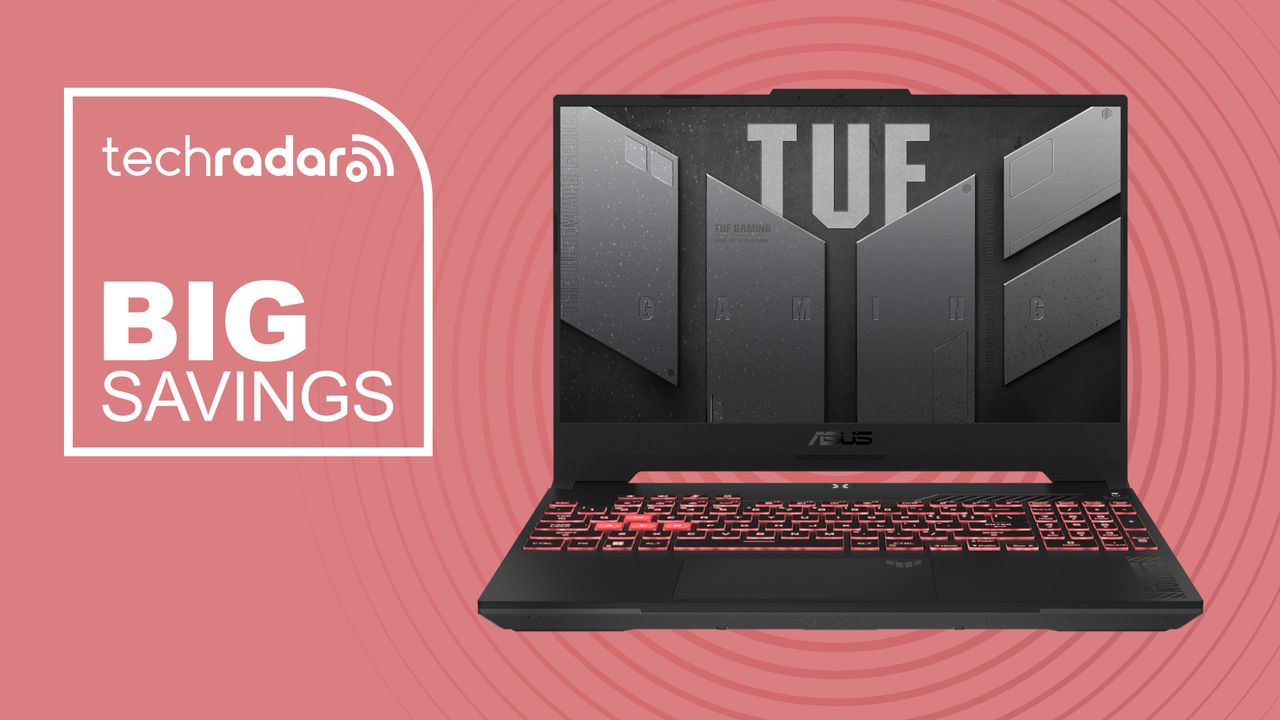
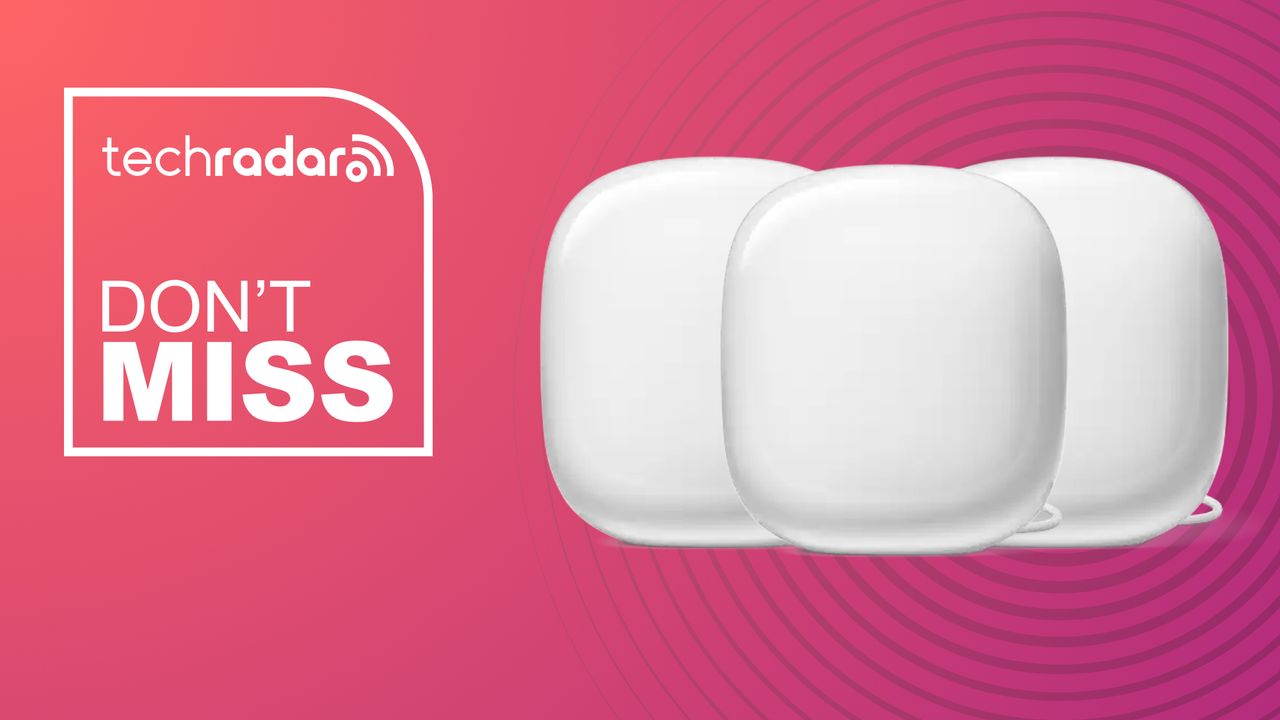
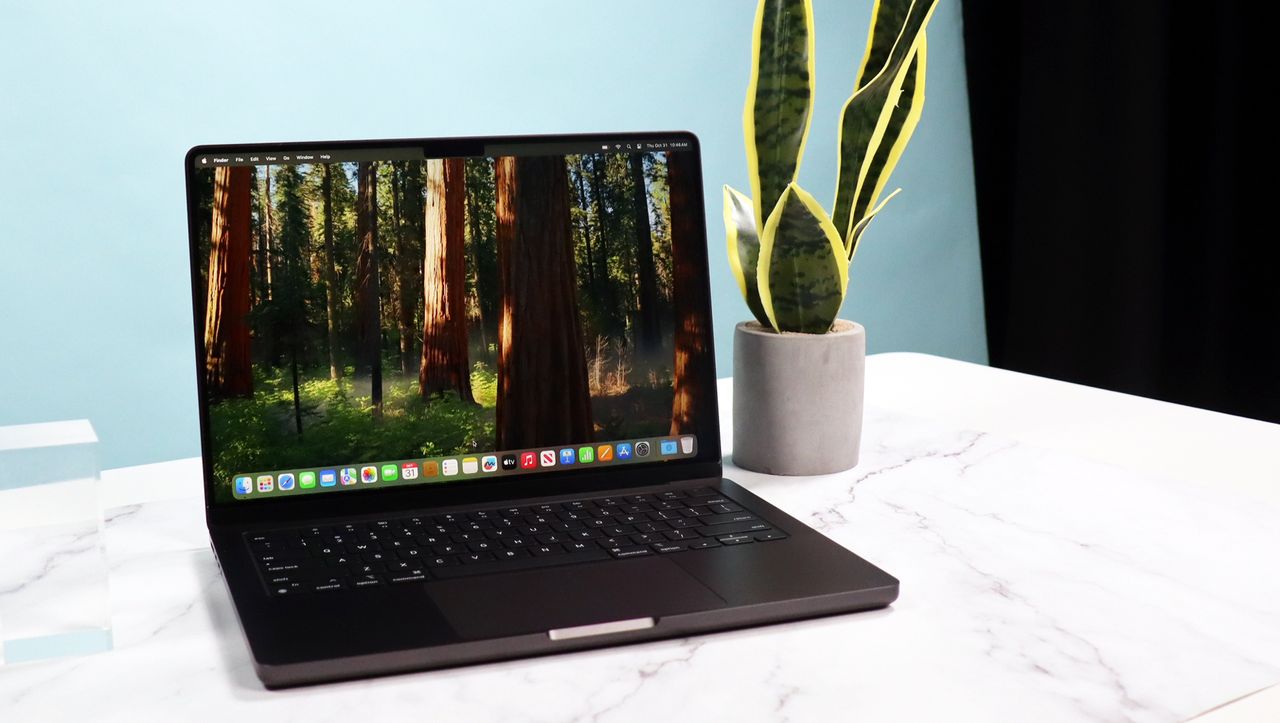


The most obvious question is “Why?”
Framework builds modular, repairable laptops that anyone can take apart and put back together again. It’s a big deal in an era where laptops are regularly sold as a single unit that, should one part break, goes in the trash. Since every part of a Framework machine can be swapped out, you can keep one going for as long as your patience, and the supply of spare parts, allows. Desktops, however, are already modular and repairable — company founder Nirav Patel said “desktop PC ethos was one of the core inspirations for the Framework laptop to begin with.” So, if desktops are already modular and repairable, why do we need one from Framework?
When the Desktop was announced, Patel said the genesis of the product came from seeing a preview of AMD’s Ryzen AI Max. It’s an APU (Accelerated Processing Unit) — AMD’s term for a chip combining a CPU, GPU and NPU in a single package, much like Apple Silicon — with plenty of hyped-up claims about its performance. Those claims were so compelling that Patel added the Desktop to the company’s roadmap just to harness that potential power. The big selling point for this chip is the sheer volume of RAM you can employ (up to 128GB) and the massive memory bandwidth (up to 265GB/s) it can take advantage of. AMD described it as a “workstation-level” chip that’ll work in a regular ‘ol PC, with the base model priced at $1,099.
But there’s a devil’s bargain in opting for such a powerful chip, since to get it means Framework has had to give up a lot of its founding principles. As someone probably once wrote, for what shall it profit a computer manufacturer if it shall gain searing power but lose its own soul?
The major issue with the Ryzen AI Max is its inflexibility since it’s made as a single package. Much like Apple Silicon products, you’ll need to pick your chip spec in the knowledge that you don’t get to change things later. Consequently, you’ll be ordering the Framework Desktop in one of three unchangeable flavors:
Ryzen AI Max 385 with 32GB RAM, Radeon 8050S GPU
Ryzen AI Max+ 395 with 64GB RAM, Radeon 8060S GPU (the model I’m testing).
Ryzen AI Max+ 395 with 128GB RAM, Radeon 8060S GPU
With every other Framework machine, the mainboard has the CPU and fan soldered in place, but that’s it. Every other component can more or less be removed and reinstalled on the replacement mainboard. Here, if that APU goes or if your needs do evolve, then you’re losing pretty much everything (including the heatsink) since it’s all soldered to the mainboard. We'll get into pricing considerations later, but replacement mainboards from Framework run between $799 and $1,699. Otherwise, the only things you can recover here are the Wi-Fi module, SSD (there’s space for two), power supply and case.
Speaking of which, the Framework Desktop is a Mini-ITX desktop in a 4.5L case, complete with optional carrying handle. It’s less understated than the cases you’d have seen at a LAN party circa 2006, but that’s not the point. While the box itself is a stark black, you can add a big chunk of personality to it with the front panel, which has space for 21 plastic tiles. These tiles come in a variety of colors (including black, green, orange and lavender) for you to mosaic to your heart’s content. You can also pick up single tiles with specific images printed on, including the Framework, AMD and Linux logos, plus this fetching pride heart. Naturally, if you’re crafty, you can also make your own.
Below the front panel and irritatingly small power button, you’ll find two of Framework’s trademark expansion card slots. These are USB-C ducts into which you can slot any of the company’s expansion cards, letting you pick and choose what I/O you have up front. But the flexibility, so necessary on a laptop, is less of an issue here since this is a Mini-ITX mainboard. Lean over to the back and you’ll find two USB-C, two DisplayPorts, two USB-A sockets as well as dedicated connections for HDMI, Ethernet and 3.5mm audio.
Framework is only selling its desktop in a “DIY Edition,” but that’s less of a big deal than you might initially expect. Whereas the company’s DIY laptops require you to put every component in the chassis, on the Desktop there’s very little to do at all. Everything bar the SSD is already in place, and all you need to do to add that is remove the heatsink and slot your drive into the M.2 slot. After that, you just need to attach the beefy 120mm fan to the equally beefy heatsink, pop the cowl on top and screw in the four screws. Framework’s wonderful iFixit-style guides claimed getting the hardware together would take between 30 and 45 minutes. I hit stop on the watch after 15 minutes and 15 seconds, and can’t imagine many folks will take much more time than that to put everything together. From there, you just need to install your operating system of choice and you’re ready to go.
With the Desktop, Framework is targeting two groups: gamers, and developers eager to use AMD’s Ryzen AI Max. The pitch to the former group could easily be boiled down to ‘this is a fast PC you don’t need to do much to build.’ That’s an easy enough metric to judge it by, since we can just run some games on it and see how well it performs. I’ll admit that I am not an AI developer, and so can’t speak as authoritatively on the latter or how effective it would be at running large models if you — as the company expects — buy several mainboards to run in a cluster.
I basically ran every title in my admittedly limited game library with the settings dialed up to max, and it didn’t break a sweat. AMD claims the Radeon 8060S GPU inside my machine goes toe-to-toe with an RTX 4070 laptop GPU. This is a ten pound hammer for the one ounce nail that is Fortnite, but even demanding titles like Hardspace: Shipbreaker breezed through. My gut tells me, however, that people wouldn’t be eyeing this up as a primary gaming machine. That’s not where this unit’s power lies, really, but in the more work-y tasks that better suit the APU.
As I said, I’m not an AI developer but I did mess around with LM Studio, which I tested with a chatbot running Google’s Gemma 3 27B model. Performance was a little slower than you may see on a web-based AI client, but not enough for it to be an issue. LM Studio, too, suggested that running this was only taking around a third of the Desktop’s CPU power, so there’s probably plenty more headroom there to run bigger and more demanding models.
I am, however, on surer footing with big workstation tasks, like video editing and exporting, and I was impressed with the results here. For this, I took a 39GB HD video file with a runtime of 2 hours, made a few minor trims, and then compressed and exported it as an MP4 file. Crunching the file down to 6GB took just one hour and 12 minutes, a staggering speed boost for a job that could take half a day to export on lesser hardware. It’s worth remembering, too, that I’m testing the middle-tier version of the Desktop with 64GB RAM.
When announcing the Desktop, Patel said the machine would run quietly even at peak power. He described it as “silent while sitting on your desktop under normal loads, and even under gaming, it’s impressively quiet.” If you’re familiar with Framework’s track record and products so far, that quote will have instantly provoked scoffing. The company does many things well, but it wildly overpromises on how quiet and cool its machines run.
Framework trumpeted how much better its cooling was on its recently-released Ryzen AI 300 mainboard for the Laptop 13, which was noisy and lap roasting. Here, you’ve got a beefy APU expected to run for sustained periods of time at 120W and up to 140W in boost. I half expected to be able to use this thing as a space heater but, mercifully, the company does seem to have made good on its promises. The 120mm fan barely got noisy at all, and I can only recall it becoming noticeable when running heavier AI models in LM Studio and when I started exporting the video file.
The starting price for the base model Desktop with the Max 385 and 32GB of RAM is $1,099. For that, you’ll get the case, power supply and mainboard, which includes its own Wi-Fi module. What the company is listing as optional extras, however, includes the SSD, CPU fan, OS and even the power lead. So, if you were looking to buy the base model as an essentially off the shelf purchase, including decorative tiles and two front-facing expansion cards, the price rises to $1,386. If you want to opt for the mid-tier option (the 395 with 64GB RAM) add $500 to the base model price. If you want to go for the high end 395 with 128GB RAM, then you’ll be adding $900 to the base price, bringing the total for an off-the-shelf model to around $2,286.
Because of the distinct nature of the Ryzen AI Max, an apples-to-apples comparison isn’t going to be perfect. But, if you were looking to spend around two grand on a high-performance PC, you could snag something like Lenovo’s Legion Tower 5 with AMD. $2,200 buys you a Ryzen 7 with 16GB DDR5 RAM, a 1TB SSD and NVIDIA’s GeForce RTX 4070 Ti with 12GB RAM. Alternatively, that figure could get you an ASUS ROG G700 with a Ryzen 7, Radeon RX 9070 XT Prime (with 16GB VRAM), 16GB RAM and a 2TB SSD. The real differentiator is how much you would value the faster memory bandwidth and speed the AI Max offers over its discrete rivals.
Framework will also sell users the Desktop’s mainboard on its own, with the base model priced at $799. Certainly, if you’ve got boxes full of spare parts and the necessary Mini-ITX case, you could save a chunk of change that way. This will also be the most cost effective way for power users to run clusters of boards for bigger projects. Pre-orders are open, but the company won’t start shipping boards on their own until it’s fulfilled all of its system orders.
In my time with the Framework Desktop, I’ve flip-flopped a few times on if this product is a hit or a miss. Framework was open about the fact this was something akin to a side project, outside its regular remit to build modular laptops, based on a particularly exciting chip. So while I think the all-in-one approach is a backward step compared to regular PCs, I get the rationale for doing so here.
Where I think Framework whiffed was to pitch this as a machine to make “PC gaming more accessible” by reducing “the mental and physical load” associated with building your own. Nightmares about thermal paste aside, I don’t think that’s a real issue for would-be gamers as they could easily pick up a pre-built system for similar cash. And I suspect most gamers would much rather use a PC with a standalone graphics card rather than slum it with an integrated GPU.
Because even mentioning gaming, really, does the machine a massive disservice, pulling the focus from its real strength. Which is the ease at which this machine handled productivity tasks, like running AI models and crunching video. The effortlessness at which it handled that brought to mind products like the Mac Studio, a creative powerhouse in its own tiny package. It’s this that Framework should have led with, especially since it’ll do all of those tasks and play games on the side.
I’m not sure I’d recommend this product to people who are just looking to buy a powerful PC or a gaming PC. It’s a tool for a specific group of users capable of taking advantage of the AI Max’s benefits that you’d otherwise need a workstation for. So while its review score is justifiably high when the Framework Desktop is judged on its own merits, that doesn’t mean you need to own one.
This article originally appeared on Engadget at https://www.engadget.com/computing/framework-desktop-2025-review-powerful-but-perhaps-not-for-everyone-150011909.html?src=rss©
© Daniel Cooper for Engadget
Finding a laptop that can juggle both gaming and schoolwork isn’t as tricky as it used to be. These days, you don’t have to choose between a machine that can handle your homework and one that can keep up with your favorite games. Whether you’re diving into an essay, editing video for a project or hopping into a round of Fortnite or Baldur’s Gate 3 after class, there are plenty of laptops that strike the right balance between performance, portability and price.
The key is knowing what to look for. A solid schoolwork and gaming laptop should have enough processing power for multitasking, a GPU that can handle modern games (even if you're not cranking settings to ultra) and decent battery life to get you through a day of classes or study sessions. Some are sleek and lightweight enough to slip into a backpack while others double as full-on gaming rigs when you’re home and plugged in. We’ve tested a range of laptops to help you find one that fits your student schedule and your Steam library.
As we’ve mentioned, gaming laptops are especially helpful if you're doing any demanding work. Their big promise is powerful graphics performance, which isn't just limited to PC gaming. Video editing and 3D rendering programs can also tap into their GPUs to handle laborious tasks. While you can find decent GPUs on some productivity machines, like Dell's XPS 15, you can sometimes find better deals on gaming laptops. My general advice for any new workhorse: Pay attention to the specs; get at least 16GB of RAM and the largest solid state drive you can find (ideally 1TB or more). Those components are both typically hard to upgrade down the line, so it’s worth investing what you can up front to get the most out of your PC gaming experience long term. Also, don’t forget the basics like a webcam, which will likely be necessary for the schoolwork portion of your activities.
The one big downside to choosing a gaming notebook is portability. For the most part, we'd recommend 15-inch models to get the best balance of size and price. Those typically weigh in around 4.5 pounds, which is significantly more than a three-pound ultraportable. Today's gaming notebooks are still far lighter than older models, though, so at least you won't be lugging around a 10-pound brick. If you’re looking for something lighter, there are plenty of 14-inch options these days. And if you're not into LED lights and other gamer-centric bling, keep an eye out for more understated models that still feature essentials like a webcam (or make sure you know how to turn those lights off).
Not necessarily — it really depends on how you define "last longer." In terms of raw performance, gaming laptops tend to pack more powerful components than standard laptops, which means they can stay relevant for longer when it comes to handling demanding software or modern games. That makes them a solid choice if you need a system that won’t feel outdated in a couple of years, especially for students or creators who also game in their downtime.
But there’s a trade-off. All that power generates heat, and gaming laptops often run hotter and put more strain on internal components than typical ultraportables. If they’re not properly cooled or regularly maintained (think dust buildup and thermal paste), that wear and tear can shorten their lifespan. They’re also usually bulkier and have shorter battery life, which can impact long-term usability depending on your daily needs.
Gaming laptops can last longer performance-wise, but only if you take good care of them. If your needs are light — browsing, writing papers and streaming — a standard laptop may actually last longer simply because it’s under less stress day-to-day.
The GPU plays a big role in how your laptop handles visuals — and it’s especially important if you’re using your computer for both gaming and school.
For gaming, the GPU is essential. It’s responsible for rendering graphics, textures, lighting and all the visual effects that make your favorite titles look smooth and realistic. A more powerful GPU means better frame rates, higher resolutions and the ability to play modern games without lag or stuttering.
For schoolwork, the GPU matters too — but its importance depends on what you're doing. If your school tasks mostly involve writing papers, browsing the web or using productivity tools like Google Docs or Microsoft Office, you don’t need a high-end GPU. But if you’re working with graphic design, video editing, 3D modeling or anything else that’s visually demanding, a good GPU can speed things up significantly and improve your workflow.
Georgie Peru contributed to this report.
This article originally appeared on Engadget at https://www.engadget.com/computing/laptops/best-laptops-for-gaming-and-school-132207352.html?src=rss©
© Engadget
Choosing the best laptop can be a bit of a challenge — there are so many models, sizes and specs out there that it’s easy to feel lost in the shuffle. But the good news is that modern laptops are better than ever. Whether you're looking for a powerful AI PC, a travel-ready ultrabook or an affordable machine that can handle everyday tasks, there's something out there for everyone. Today’s systems combine improved performance, longer battery life and smarter features in sleek, lightweight designs that are built to keep up with work, play and everything in between.
Out of all of the notebooks we've tested and reviewed recently, we consider Apple's 13-inch MacBook Air M4 to be the best laptop for most people, and this is still the case for our top picks to start off the new year. It's powerful enough to handle most tasks (even light video editing); it has a great screen and built-in speakers; and its battery could last over 18hours (depending on what you're doing, of course). The MacBook Air M4 is also one of the lightest and thinnest systems we've reviewed, and it's dead silent, thanks to a fanless design.
Of course, not everyone wants a MacBook, and there are excellent Windows laptops and Chromebooks out there, too. Windows systems offer a range of configurations, from budget to high-end UHD screens with stunning IPS panels that boast high nits for vivid brightness. Chromebooks, on the other hand, tend to be more affordable and are great for users who mostly work online. Whether you need a powerhouse for creative work, a compact system for note-taking, or a laptop that can handle family movie night, there’s something for everyone in today’s laptop market.
Engadget has been reviewing laptops for two decades, and while the definition of what a portable PC is has changed considerably since, our obsession with testing their limits and serving up informative buying advice remains the same. Be it a hybrid tablet like Microsoft's Surface machines, a rotating 2-in-1 convertible like HP's Spectre x360s or a plain old clamshell notebook, our review process follows similar beats. How does it look and feel? How fast is it? Whether it’s a Windows device powered by an Intel Core i5 or higher, a MacBook or a Chromebook, we aim to answer the most important question: Is it actually worth your hard-earned cash? We also pay close attention to portability, webcam quality and display features, including IPS panels and nits of brightness, as they can make a big difference in daily use.
There's a good chance you've already committed to an operating system, but my advice is to be as flexible as possible. These days, most major software is compatible with both Macs and PCs. (Of course, it's another story if you've become dependent on an Apple-only app like Final Cut Pro.) Web-based apps, naturally, will work on any platform with an internet browser.
If you're an Apple-loyalist, there aren't many reasons to consider Windows laptops (unless you want a secondary gaming machine). But for Windows users, macOS is becoming more tempting every year. Apple's MacBooks, powered by its M-series Silicon chips, are among the fastest and most efficient laptops we've ever seen. They're incredibly well-built and have outstanding battery life to boot. MacOS itself is also an easy platform to learn, especially if you're used to iOS and iPadOS.
That brings up another point: iPhone users may want to consider Macs because of the seamless integration with Apple's other platforms. You can't respond to iMessage conversations easily or hop into FaceTime chats on Windows PCs, but doing so is simple on Macs. (Microsoft's Phone Link app lets you send iOS users individual texts, but not media or group chats.) Android users, meanwhile, may be better off with Windows, as Phone Link can make calls, synchronize all your texts and also access your phone's photos.
If cloud gaming is your priority, Windows laptops with NVIDIA’s GeForce Now or Xbox Cloud Gaming compatibility may offer more flexibility and decent performance, especially when paired with fast internet speeds. Chromebooks also make a compelling case here as an affordable, lightweight solution for casual cloud gaming sessions.
As for whether you’ll want a PC with a dedicated Copilot AI button on the keyboard, that depends on how often you see yourself using Microsoft’s generative tools. Given we’re only just seeing the first slate of AI PCs, it would be wiser to wait out the hype and see what improvements might come over time.
And what about ChromeOS? Chromebooks are a smart and (typically) inexpensive way to do things like web browsing and hopping on a few video chats, but for most, they're not the best choice as a primary computer. There aren't many apps or games that work offline, and they also don't work with powerful software suites like Adobe's (you can use the stripped-down Adobe Express and Photoshop online tools, though).
Chromebooks are great secondary machines to use alongside a more powerful Mac or PC, and they're popular in schools because they're cheap and easy for IT workers to manage. And if all you need is web browsing access, or a notebook for a kid, a Chromebook might be enough.
If, for some reason, you’re looking for a powerful ChromeOS system, there are also Chromebook Plus models to consider. These machines sport faster processors and more RAM than typical Google notebooks, and they can also tap into a few of the company’s online AI features, like AI image generation and photo processing.
You can expect to spend between $1,000 and $1,800 for a new laptop these days, depending on the configuration. If you're looking for more of a workhorse, that could cost you well over $2,000 for additional RAM, storage, as well as a beefier graphics card and CPU. But you can also find some good laptops under $1,000 if you're willing to overlook build quality (or buy a refurbished or previous generation machine, which we highly recommend). Systems with AMD chips tend to come in cheaper than their Intel counterparts, but the bulk of their cost will come down to other components like RAM and storage.
I’ve included our favorite affordable model in this best laptop buying guide, but we have a list of the best budget laptops that you can check out as well.
So how portable do you want your laptop to be? That's the ultimate question you need to ask when choosing between various screen sizes. 13-inch machines have become a solid starting point for most shoppers — it's enough real estate for the majority of tasks like emailing and writing, and it also helps keep machines relatively light (typically between two to three pounds). Thanks to manufacturing advancements, these dainty machines sometimes even come with larger screens (the smaller MacBook Air actually has a 13.6-inch display).
If you have trouble seeing fine text, we’d recommend going for a display larger than 13 inches. ASUS’s Zephyrus G14 is a solid 14-inch option for gamers, and we’re also seeing more productivity-focused machines aim for that size, like the Dell 14 Premium and MacBook Pro. While 14-inch notebooks are a bit heavier than 13-inch models, coming in between three to four pounds, their screens are noticeably roomier.
For artists, or anyone else who needs a large canvas, a 15-inch laptop may make the most sense. They typically weigh between 3.5 and 4.5 pounds, but that extra heft may be worth it to fit wider video editing timelines or Photoshop windows. And, as you'd expect, you'll also pay a bit more for a 15-inch notebook compared to smaller ones (the 15-inch MacBook Air starts at $1,199, while the smaller model goes for $999). PC makers are also replacing 15-inch systems with 16-inch versions, which will give you even more space to work.
If you're in the market for a business laptop, size and portability might be key considerations. A lightweight yet powerful system with a long battery life can make a world of difference if you travel frequently for work.
You can still find laptops with 17-inch or 18-inch screens, but those are typically gaming systems or souped-up workstations. They're not meant for mere computing mortals.
These days, most laptops ship with a few USB-C ports, which can handle both charging and speedy data transfers. Apple's MacBooks also include a separate connection for MagSafe power, and you'll find custom power connections on some PCs like Microsoft's Surface. Older USB Type-A connections are less common now, but they still pop up in systems like HP's Spectre x360 14, as well as many models from ASUS.
For gamers or creators who rely on discrete graphics, ensuring your laptop has the right ports for external monitors or GPUs is crucial. DisplayPort or HDMI connections can also ensure you’re ready for dual- or multi-screen setups for more immersive experiences. Similarly, if you want to save high-resolution files or install multiple games, you might need to consider additional hard drive space; external hard drives are pretty affordable, as long as you have a proper port to connect them.
If you're a fan of wired headphones, it's worth keeping a close eye on headphone jack availability. They usually include a USB-C to 3.5mm adapter, but that's a clunky solution, and it also takes up a USB port. Sure, most people use wireless earbuds and cans today, but it's still helpful to have a wired one around for when those devices run out of juice.
Most laptops today offer Wi-Fi 6 or 6E and Bluetooth 5.0 or later, which should mean faster and more stable connections if you have compatible routers and devices. While Wi-Fi 7 routers have started appearing, that spec hasn't made its way into laptops yet. As for cellular coverage, there are notebooks like the Surface Pro 9 and Samsung Galaxy Book models that offer integrated 5G. But from our testing, that feature may not be worth the cost of a separate data plan. Instead, you could tether to your smartphone or invest in a wireless hotspot that can keep multiple devices online.
A laptop's battery life depends on several factors: The power draw from the screen and other hardware, the optimizations used to avoid unnecessary power drain, and, of course, the size of the actual battery. One of our previous favorite systems, the Dell XPS 13, lasted 13 hours and 15 minutes in the PCMark 10 battery benchmark. In real-world testing, I was able to use it for a day and a half without needing a recharge. The MacBook Air 13-inch, meanwhile, more than 18 hours in our benchmark and kept running for more than two work days of my typical workflow. In general, you should expect a modern laptop to last at least eight hours.
If battery life is your absolute priority, I'd strongly suggest looking at Macs over Windows PCs. Apple's M-series chips are essentially mobile hardware, with all of the power efficiency you'd expect from something originally designed for phones. Qualcomm’s upcoming Snapdragon chips could help Windows PCs compete with Apple’s astonishing battery life, but we’ve yet to see those in action. Chromebooks also typically get decent battery life (as long as you don’t overstuff them with power-draining tabs).
A laptop's refresh rate refers to the amount of times its screen is cycled every second. Modern displays like IPS LCDs and OLEDs support 60Hz refresh rates at a minimum, but we're seeing more devices offering 120Hz, 240Hz and beyond. The higher the number, the faster the screen is refreshed, which ultimately leads to a smoother experience while mousing around or scrolling through web pages. (If you want to get a sense of what a slow refresh rate looks like, just grab an e-reader like the Kindle and try to flip between book pages.)
While high refresh rates used to be reserved for gaming laptops, nowadays we're seeing more mainstream machines like the Dell 14 Premium offer 120Hz (or variable rates that move between 60Hz and 120Hz).
If you’re buying a new laptop, you’ll want to make sure it’s powered by the latest CPUs. For Windows PCs, that includes Intel’s Core Ultra chips for thin-and-light machines or the 14th-gen HX chips for beefier systems. The Core Ultra series have NPUs for handling AI tasks, while the HX hardware does not – they’re based on Intel’s previous chip architecture, and they’re more focused on delivering raw horsepower. Intel's older 13th-gen and 12th-gen laptop chips also don't have NPUs, so keep that in mind if you're looking at used systems.
You'll also see AMD's Ryzen 8000 and 9000 chips in plenty of new systems like the ASUS Zephyrus G14 and Razer Blade 14. Those CPUs mainly target gaming laptops and high performance systems, while you'll still find AMD’s older Ryzen 7000 chips in ultraportables. AMD's main advantage is that its chips also include Radeon graphics, which are far more capable than Intel's Arc hardware (though those are getting better).
Qualcomm’s new Snapdragon X Elite and X Plus are also an option in Copilot+ PCs (more on those below). Since they’re based on mobile chip designs, they’re likely also more power efficient than AMD and Intel’s hardware. In the past, we’ve avoided recommending Snapdragon chips because they led to a slow and frustrating Windows experience. But Microsoft claims it’s rebuilt Windows 11 around Snapdragon’s Arm-based architecture, which should lead to far faster performance and better app compatibility.
As for Apple's laptops, you'll be choosing between the M4, M4 Pro and M4 Max, each of which is progressively more powerful.
On the graphics side of things, a GPU, or graphics processing unit, is the component that communicates directly with a laptop's display. Laptop CPUs all have some form of integrated GPU: Intel has either its standard graphics or beefier Arc hardware, while AMD's chips include fast Radeon mobile graphics. If you want to play demanding games at high speeds (measured in frames per second, or fps), or if you need some extra power for rendering video or 3D models, you can configure a laptop with a dedicated GPU like NVIDIA's RTX 40-series hardware or AMD's Radeon RX 7000. Just be sure to leave room in your budget if you want a powerful GPU, as they typically add $300 or more to the cost of a laptop.
Apple's M-series chips, meanwhile, have GPU cores that can perform as well as NVIDIA’s and AMD's lower-end dedicated GPUs. That's quite the accomplishment for systems like this (especially the MacBook Air and 14-inch MacBook Pro), and it's another reason we highly recommend Apple's notebooks.
Simply put, an AI PC is a computer equipped with a neural processing unit (NPU), which is designed to handle AI-related tasks. Much like how GPUs tackle heavy-duty gaming and rendering workloads, NPUs are designed to handle the complex math necessary for AI workloads. They’re also far more power efficient than CPUs or GPUs, which could lead to better battery performance in laptops. While many factors go into NPU performance, for the most part we measure their potential speed by TOPS (tera operations per second).
We were primed for AI PCs based on the chips Intel and AMD announced in 2023. Intel unveiled its "Core Ultra" CPUs in December, its first to include an NPU for AI work. AMD also announced its Ryzen 8040 AI mobile chips that month (and it couldn't help but say they were faster than Intel's new hardware). But in May, Microsoft announced its Copilot+ initiative, which is pushing major PC makers to deliver premium AI PCs with specifications including 16GB of RAM, 256GB SSDs and NPUs with at least 40 TOPS of AI performance.
Copilot+ is more than just a marketing term: Microsoft is also launching AI-powered features in Windows 11 that take advantage of powerful NPUs. That includes Recall, which can help you locate anything you’ve done on your PC (whenever it finally launches), as well as Cocreator in Paint, which can generate AI images based on text prompts and doodles.
If you buy an AI PC that isn’t Copilot+ certified, you’ll still be able to use some features like Windows Studio Effects, which can blur your background in video calls or keep you in frame. Developers like Adobe and Audacity are also building features into their apps that can take advantage of NPUs.
At the time of this post, Chromebook Plus notebooks can also access a few of Google’s online AI features, like image generation and photo processing.
The ThinkPad X9-14 Aura Edition is a great spiritual successor to the ThinkPad X1 Carbon, offering the best that business laptops have to offer. That includes long battery life packed into a thin and light chassis. This is an optimal ultraportable business laptop.
While the price might give you some pause, we tested the lowest configuration, and found that the X9-14’s performance is excellent for casual business users. The only issue with quality is that the keyboard is lacking. It’s mushier than we’d like, which could get a bit tiresome throughout the day. You’ll still miss out on a USB Type-A port, so you may need to carry a Type-C hub with you.
Where the ThinkPad X9-14 will win you over is its bold OLED screen. Combo that with its well-rounded audio, and the ThinkPad X9-14 makes for an excellent multimedia device in and out of the workplace.
Aside from its lovely OLED screen, the ASUS Zenbook 14 OLED doesn't stand out from the crowded laptop field in any way. It just looks dull and boring, especially compared to the strikingly beautiful ASUS Zephyrus G14, which also came out this year. While you can probably find the Zenbook 14 for a decent price, I'd recommend holding out for something with a bit more personality (and with a less wobbly screen hinge).
The Razer Blade has almost everything you'd want in a 14-inch gaming notebook, but it's far pricier than the Zephyrus G14 on this list, and it doesn’t even have an SD card reader. It would be a solid competitor once its price falls a bit, and it's certainly a great option if you just have to have a jet-black laptop.
Framework gave its modularity magic to the Laptop 16, delivering a gaming notebook where almost every single component is user replaceable. But you'll have to pay a pretty penny to snag it with upgraded hardware, and its optional Radeon 7700S GPU was surprisingly slow.
The Alienware m16 r2 has been revamped with a slimmer case, but it’s otherwise a fairly typical gaming laptop. It’s a solid option for Alienware fans, but you’ll find better hardware and deals elsewhere.
The Zenbook Duo is a fascinating dual-screened notebook, and according to my colleague Sam Rutherford it’s the first of its kind that’s worth buying. But its unique hardware isn’t really meant for mainstream consumers, and Windows 11 still doesn’t support multi-screen setups well enough to make full use of the Zenbook Duo’s ample canvas.
Dell’s XPS 16 is big and beautiful, but it’s far too expensive compared to the competition. Plus, it uses a capacitive row of function keys that you basically can’t see under bright light and has too few ports for a machine of this size.
See Also:
It’s hard to come up with an average battery life for laptops, since that will ultimately depend on what you’re doing with them. An ultraportable like the MacBook Air that sips power can last around 20 hours in our battery benchmark, and around two full work days of real-world usage. But a gaming laptop may last only a few hours if you’re actively playing something while on battery. At this point, Macs are delivering far better battery life than PCs, thanks to Apple’s Silicon chips, but Microsoft claims Copilot+ systems with Qualcomm chips will also get over 20 hours of batter life.
The more RAM you have, the more things your computer can do simultaneously. For that reason, we recommend buying PCs and Macs with at least 16GB of RAM. That gives you enough memory to have several applications open at once, as well as web browsers filled with RAM-hogging tabs. Many PC games also require at least 16GB of RAM. While you could use a system with 8GB of RAM for basic tasks, you’ll quickly run into slowdowns and error messages as your apps stack up. Many laptops, especially ultraportables, don’t let you upgrade RAM, too – so you’ll have to buy an entirely new computer if you didn’t equip enough memory at the start.
If you’re a hardcore gamer, programmer or planning to render videos or 3D models, then you may want to go for 32GB of RAM or more. And if you just need a secondary laptop for lighter work – perhaps a no-frills system for writing – then you can probably get by with 8GB. Just be sure to keep those browser tabs in check.
There is no one-size-fits-all solution when it comes to laptop storage. You’ll typically find configurations between 256GB and 1TB SSDs (solid state drives) on most laptops, and I’d recommend most people get at least 512GB. That’ll be enough space for large apps, music and video files without stressing your system too much. If you’re a media hoarder, or want to play a ton of games, then it’s definitely worth getting a 1TB SSD.
If you’ll mainly be streaming your shows and music, and would rather invest in RAM or other hardware, then 256GB of storage would be serviceable. I’d recommend staying away from any machine with 128GB of storage though. Most of that will be taken up by the operating system, and you’ll likely run into issues cramming in large apps after a few months.
We recommend springing for extra built-in storage or investing in a portable SSD for backing up your most important files. It's also worth noting that Chromebooks tend to come with less built-in storage — 32GB, 64GB or 128GB — since ChromeOS encourages users to save their files in the cloud rather than on the device. In that case, 128GB is plenty.
You can expect to spend between $1,000 and $1,800 for a typical 13-inch laptop today. As I explained above, you'll pay more if you want to stuff in more RAM or better GPU hardware. But you can also find deals below $1,000 if you look for refurbished or older-generation models.
Simply put, macOS is the operating system in all of Apple's notebooks and desktops, while Windows powers the vast majority of PCs. You'll also find Chromebooks running Google's ChromeOS, but those are basically just web browsers running on top of Linux.
Debating the differences between Windows and Macs is something PC nerds have been doing since the '80s, so we won't be declaring a winner here. There are some small, negligible distinctions, like using a Command versus a Control key, how file explorers work and concerns about viruses and security. For the most part, those are minor issues or have become moot thanks to better built-in security.
But if you care more about playing the newest games, you'll want to have a Windows system. If you're more focused on creative apps, like Photoshop, Premiere and Final Cut Pro, then macOS may be a better fit (especially if you're running an iPhone).
There is no single "best" laptop brand, but judging from this guide alone, we're generally impressed by notebooks from Apple, Dell and ASUS. They all offer fast, reliable and sturdy machines. HP also makes some eye-catching devices if you want an option that’s the most aesthetic. Those four brands, along with Lenovo and Acer, dominate laptop sales worldwide. We'd avoid systems from any retail store brands, or companies that don't have a major presence in the US.
August 2025: Updated our top picks to include the Dell 14 Premium.
May 2025: Updated to ensure top picks and details are still accurate.
March 2025: Updated to include the M4-powered MacBook Air.
November 2024: Updated to include the M4-powered MacBook Pros.
August 2024: Updated to include the Lenovo ThinkPad X1 Carbon Gen 12.
This article originally appeared on Engadget at https://www.engadget.com/computing/laptops/best-laptops-120008636.html?src=rss©
© Sam Rutherford for Engadget
Every now and then companies make truly boneheaded decisions, which is exactly what happened when Dell killed off the name of its most iconic PC line and replaced it with something generic. It's like if Ford decided to rebrand Mustang and call it The Prime Sportscar instead. It doesn't make sense. But now that XPS has become Premium, it's time to see if Dell's latest flagship 14-inch ultraportable — the Dell 14 Premium (you see how dumb that sounds?) — still has the DNA that made its predecessors one of the best notebook families for more than a decade.
Instead of doing a full redesign to match its updated name, for 2025 Dell kept the same chassis it used on last year's XPS 14. And I'm not mad at all because it's still one of the most beautiful and elegant notebooks on the market today. Its aluminum chassis has clean lines, a Gorilla Glass 3 surface and just the right amount of ports for a laptop this size: three USB-C slots with Thunderbolt 4, a 3.5mm audio jack and a microSD slot. That's important, because the 14 Premium's smaller sibling — the XPS 13 (which isn’t being renamed yet because it isn't getting updated this year) — doesn't have a headphone jack or a built-in card reader. That said, at between 3.66 and 3.79 pounds depending on which display you pick, the 14 Premium is a touch heavier than some of its similarly-sized rivals like a 14-inch MacBook Pro (3.4 pounds). The difference is small enough that I'm not bothered, though.
There's also a glass wrist rest with a touchpad that blends invisibly into the deck, which might make it seem potentially hard to use. However, because the tracking area is absolutely massive (it spans the entire area below the spacebar plus the right ALT and Copilot keys), I never felt cramped or like I needed to actively search for my cursor. I also appreciate how Dell found room for speakers on either side of the keyboard.
On the other hand, Dell's touch buttons above the number row may be a bit more contentious. I don't mind the ones for adjusting volume and display brightness, but replacing the physical keys for Escape and Delete with the touchscreen options just feels a bit weird. Especially if you ever need to use the classic Windows CTRL + ALT + DEL shortcut and have to press regular keys and touch controls in a single motion. The touch keys also don't turn off when you disable the keyboard's backlight, but at least they're dim enough that they're not distracting.
As for its display, by default the 14 Premium comes with a 14.5-inch 2K 120Hz non-touch IPS display. However, on our review unit, I've been using Dell's optional 3.2K 120Hz touch OLED panel and I must say, it's definitely worth the $200 upcharge. That's because while the OLED screen has slightly lower max brightness (400 nits versus 500 nits for the IPS), its wider color gamut and improved contrast ratio more than make up for that shortcoming.
A base Dell 14 Premium comes with an Intel Core Ultra 7 255H CPU, 16GB of RAM and 512GB of M.2 storage. However, our review unit includes extra memory (32GB), a bigger SSD (1TB) and perhaps most importantly, an optional NVIDIA RTX 4050 GPU.
All told, that's a pretty well-rounded package, as Dell's default config has more than enough performance to handle pretty much any level of regular productivity. And by adding in support for discrete graphics, suddenly you have a machine that's significantly better equipped to take care of more demanding tasks like video editing or even gaming in your off hours. Granted, the 14 Premium's RTX 4050 card is an entry-level component that recently became a generation old, but it was strong enough to hit 60 fps in Cyberpunk 2077 at 1080p on high settings (with DLSS set to balanced), which ain't too shabby considering its portability.
The Dell 14 Premium packs good but not outstanding battery life thanks to its 69.5WHr power pack. On PCMark10's Modern Office rundown test, it lasted 8 hours and 30 minutes on the dot That’s significantly longer than ASUS' ROG Z Flow 13 (6:54) and last year's Razer Blade 14 (6:46), but still a far cry from true power-sipping systems like the ASUS Zenbook 14 OLED (12:43) or even Dell's own XPS 13 (13:15).
Even with a new and rather uninspired name, it probably shouldn't come as a surprise that the Dell 14 Premium remains one of the best Windows laptops on the market. It has the same sleek design from back when it was still called the XPS 14 but with some refreshed specs and components for 2025. Its chassis strikes a brilliant balance between modern minimalism and usability, while upgrades like its OLED display and discrete graphics give you the ability to build out a versatile but still very portable device.
Now I admit that our fully loaded review unit is a bit pricey with a retail price of $2,450, though I'd be remiss to mention that Dell is currently running a sale that knocks $200 off that cost. Regardless, with the base model starting at $1,650 (before discounts) or $1,850 when paired with Dell's optional OLED panel (which everyone should at least consider), the 14 Premium still feels like a great deal. And when you consider that the XPS 13 isn't getting any updates this year on top of having fewer ports, the choice becomes even clearer. If I were going to spend my own money on a traditional Windows ultraportable laptop, this is the laptop I'd get.
This article originally appeared on Engadget at https://www.engadget.com/computing/laptops/dell-premium-14-review-new-name-same-great-laptop-120047563.html?src=rss©
© Sam Rutherford for Engadget
